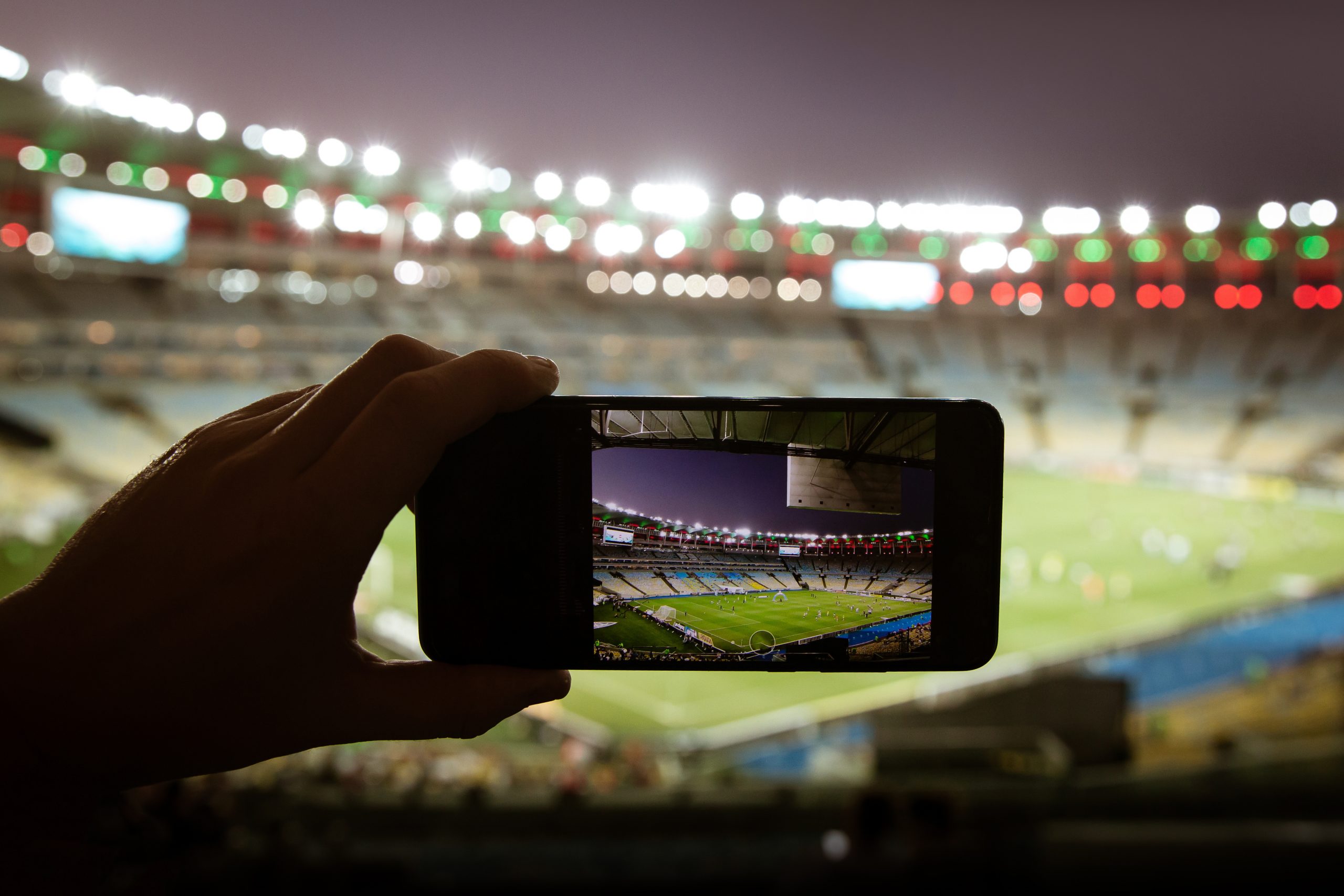5G at the heart of the stadium experience
From 1979 to 2019, from 1G to 5G
The bandwidth available for mobile data exchange is constantly increasing. We’ve come a long way in forty years! Let’s take a quick look at this dazzling evolution.
The 1G was launched in Japan in 1979 and in the United States in 1983. The 2G, the first generation of the GSM standard, was launched in Finland in 1991. The transmission speed was initially 9.6 kbit per second. At its peak the 2G (EDGE) reached 500 kbit per second.
NTT Docomo launched 3G in 2001. 3G was the first technology to enable packet data transfer. Four times faster than 2G, it favoured the development of voice over IP (Skype), the launch of the Blackberry (2002) and contributed to the popularity of the iphone, launched in 2007.
4G was launched in Stockholm, Sweden and Oslo, Norway in 2009 in the LTE (Long Term Evolution) format. With a transmission speed of 1 gigabit per second, 4G has enabled the development of gaming and live streaming offers on cell phones. If the transition from 2G to 3G had only required a change of SIM card, it was necessary to change the device (and network infrastructure) to take advantage of 4G. This mandatory upgrade allowed smartphone manufacturers and infrastructure providers to reap unprecedented profits. Although 4G is now the world’s most widely used standard, there is still a concern about coverage (in the UK only 53% of mobile subscribers actually have access to 4G). This is an issue that will need to be addressed for the transition to the next generation, which is already underway. South Korea was the first country in the world to deploy 5G in 2019.
5G, essential to the development of IoT and broadband applications
This new technology promises data rates of several gigabits of data per second. More importantly, for what we are concerned about in this article, it will support up to 1 million mobiles per square kilometer (10x more than 4G).
We’re not just talking about smartphones or tablets, but all devices connected to the Internet of Things (IoT). 5G will enable the deployment of very high-speed digital applications (AR, VR, MR) in large gathering places, from stadiums to concert halls and convention and exhibition centers.
5G, at the heart of the stadiums of the future
The 5G was launched for the first time in a stadium in Wolfsburg, Germany, in September 2019. A dedicated application was developed by Vodafone and the DFL (Deutsche Fußball Liga). It is based on the collection of approximately 3.6 million data points and 1,600 events per match. All this information, processed locally by a computer located in the stadium, is available in real time to fans equipped with 5G devices. Fans can view statistics by team and player. It is even possible to determine a player’s speed. Augmented reality (AR) will soon be added to the list of available functions, superimposing an interactive layer on the action.
The 5G also allows the fan to multiply his points of view, at 360°. He is no longer confined to his position in the stadium. He can connect to a series of cameras to enjoy the action from his best angle. He can even, why not, invite himself on the bench and discover the coach’s strategy in real time, or even ask him questions during the post-match press conference, or share the joy of the players in the locker room in case of victory. With enough bandwidth, anything that can be filmed can be shared, in real time, from any angle.
Communication, e-commerce & gaming
This type of application will also allow an enriched communication between fans, beyond a classic text chat. One can imagine the real-time sharing of images of the action from different points of view as well as the exchange of video selfies allowing to discover the fans’ reaction to an action from several angles, some excerpts being broadcast on the stadium’s screens, all edited in real time by artificial intelligence to be available in replay on the application as soon as the game is over.
The Golden 1 Center, home of the Sacramento Kings NBA team, has launched a variety of fun and practical micro-applications for fans. For example, they can order drinks or merchandise from their headquarters or organize virtual games in augmented reality on the field during breaks. A convergence between real action and virtual leagues can be glimpsed, in total symbiosis. In other sports, we can already imagine F1 fans driving a virtual car next to a real car on the Francorchamps circuit or tennis fans kicking the ball between sets on the center court of Roland Garros. Creative people will have a great time!
In permanent connection in the stadium and with other stadiums
You may remember a bygone era when some geeky fans used to stick a transistor in their ears to watch live matches in other stadiums. With the 5G, it will be possible to display this information on your smartphone screen (including action, normal speed and slow motion), while you can view the statistics of the game in progress in the stadium you are playing in. You’ll also be able to enjoy the live commentary available via an audio channel.
Imagine the day when all of this will be displayed virtually in your field of vision with augmented reality glasses or lenses. Note that the interaction will be two-way. You will be able to communicate information to your favorite club through the channels that will be offered to you thanks to the deployment of 5G. This connectivity at all times will allow you to offer multimedia services that a low-performance public Wi-Fi network could not support.
Outside the stadium, a shared RV experience
All the 5G technology deployed in the stadium will also enable the design of an immersive multimedia product that can be consumed remotely.
Beyond the tens of thousands of people present in the stadium, it will potentially be millions of spectators who will one day take their place around the field, at 360°, via their RV helmets. With the possibility, why not, to ask their personal robot to bring them a small beer between two phases.
We are only at the beginning of a great technological adventure where live entertainment, from music to sports, will take on a new dimension, locally and on the scale of the web.


